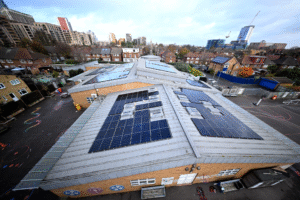The UN’s ‘New Urban Agenda’ (NUA) was formally adopted almost a year ago in October 2016 at the conclusion of the UN Conference on Housing and Sustainable Urban Development (also known as Habitat III) in Quito, Ecuador.
Over 30,000 people from 167 countries, including the UK, participated in Habitat III and in shaping the final document. The NUA was endorsed by the UN General Assembly later that year.
What is the NUA?
It is an ‘action-oriented document which sets global standards of achievement in sustainable urban development, rethinking the way we build, manage, and live in cities’.
It falls within the UN-Habitat programme whose mandate is to address the issues of urban growth and promote socially and environmentally sustainable human settlements development.
The NUA consists of three interlinked underpinning broad principles for the planning, construction, development, management and improvement of urban areas:
- Leave no one behind, ensure urban equity and eradicate poverty
- Ensure sustainable and inclusive urban prosperity and opportunities for all
- Ensure environmental sustainability, ecological protection and urban resilience to climate change
The accompanying Quito Implementation Plan (QIP) outlines a range of voluntary commitments by stakeholders (e.g. national and local governments, civil society organisations and businesses). These aim to aid and strengthen implementation of the outcomes of Habitat III and the NUA.
Relationship to the Sustainable Development Goals (SDGs)
The NUA foreword states that it is designed in the context of the UN 2030 Agenda for Sustainable Development (the 2030 Agenda). The 2030 Agenda is a ‘plan of action for people, planet and prosperity’. It consists of 17 SDGs and is known as the global goals. In September 2015, 193 members of the UN, including the UK, adopted this agenda and committed themselves to working ‘tirelessly for the full implementation of this agenda by 2030’.
The NUA is specifically linked to the 11th SDG on sustainable cities and communities. However, around one third of the SDGs contain an urban component, such as the goals to have affordable and clean energy, decent work and economic growth, industry, innovation and infrastructure, and responsible consumption and production. It is therefore clear that the SDGs cannot be delivered without successful sustainable urban development.
Cities can also be a source of sustainable solutions, instead of simply being the cause of unsustainable problems
Climate change and sustainable urbanisation
The QIP declares the commitment of the parties to promoting international, national, subnational and local climate action, particularly supporting building resilience and greenhouse gas (GHG) emissions reduction measures ‘consistent with the goals of the Paris Agreement’.
As cities expand and pursue economic growth, GHG emissions produced will also increase. Actions to tackle emissions have already been devised in strategies such as the regional EU 2030 energy strategy which aims for 40% cut in GHG emissions compared to 1990 levels by 2030, and the domestic Climate Change Act 2008 to reduce GHGs by at least 80% of 1990 levels by 2050.
However, the NUA focuses on more than emissions. It communicates unequivocally that the way cities are planned, financed, developed, built, governed and managed has a direct impact on sustainability and climate resilience beyond urban boundaries.
This requires a medium to long-term planning process, plus city-level assessments of climate vulnerability and impact. This information should be used to inform adaptation plans, policies, programmes and actions to build urban resilience.
The use of ecosystem-based adaptation, integrating disaster risk reduction, and including climate change adaptation and mitigation considerations and measures are considered vital in urban and territorial development and planning processes.
Why does the NUA matter?
Around 54% of the world’s 7.3 billion people now reside in urban areas. This is projected to increase to 66% by 2050. Taking into consideration that the world population is anticipated to reach 9.8 billion in 2050, nearly 6.5 billion of us will be city dwellers by the midpoint of this century.
The clock is ticking down. There is a critical limited time period in which to deliver the SDGs, meet the Paris Agreement goals, and prepare for the consequences of rapid urbanisation and climate change impacts.
But cities can also be a source of sustainable solutions, instead of simply being the cause of unsustainable problems.
The NUA is a timely illustration that these interconnected challenges are not just for politicians, scientists and lawyers to solve, but those involved in urban development also have a crucial role to play. While not legally binding, the NUA provides all these players with a positive plan. They simply need to muster the conviction to work together to put it into action, and soon.
- A fuller version of this article was originally published in the UK Environmental Law Association (UKELA) E-law Journal, July/August 2017 edition
Photo by Kyle Taylor, Dream It. Do It.
















